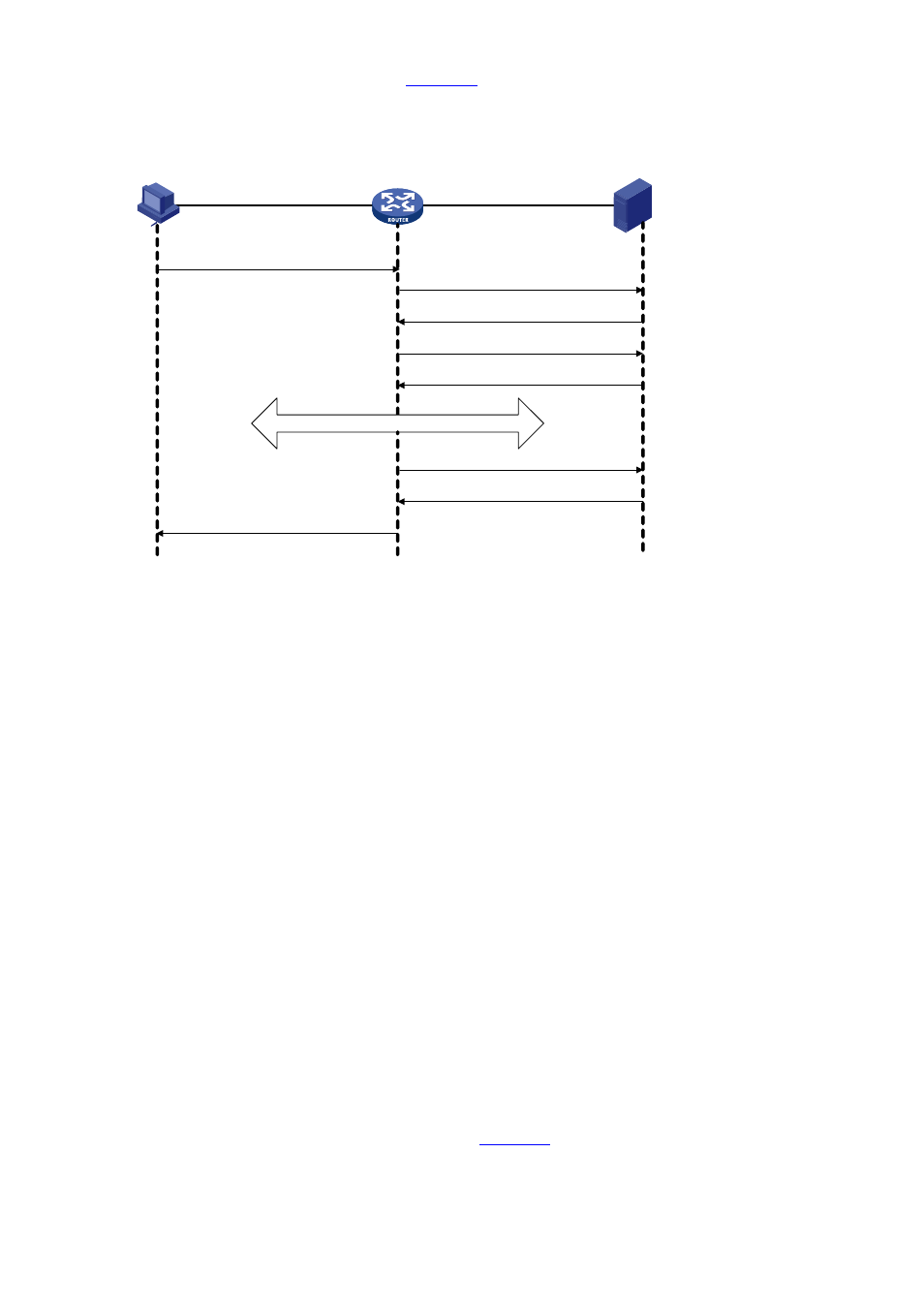Radius message format – H3C Technologies H3C S3100 Series Switches User Manual
Page 409

1-4
the authentication response message.
depicts the message exchange procedure between
user, switch and RADIUS server.
Figure 1-3 Basic message exchange procedure of RADIUS
RADIUS Client
RADIUS Server
( 1 )
The user inputs the user
name and password
( 3 )
Access-Accept
( 2 )
Access-Request
(4 )
Accounting-Request (start)
( 5 )
Accounting-Response
( 6 )
The user begins to access resources
( 7 ) Accounting-Request (stop)
( 8 ) Accounting-Response
( 9 )
Inform the user the access is ended
Host
The basic message exchange procedure of RADIUS is as follows:
1) The user enters the user name and password.
2) The RADIUS client receives the user name and password, and then sends an authentication
request (Access-Request) to the RADIUS server.
3) The RADIUS server compares the received user information with that in the Users database to
authenticate the user. If the authentication succeeds, the RADIUS server sends back to the
RADIUS client an authentication response (Access-Accept), which contains the user’s
authorization information. If the authentication fails, the server returns an Access-Reject response.
4) The RADIUS client accepts or denies the user depending on the received authentication result. If it
accepts the user, the RADIUS client sends a start-accounting request (Accounting-Request, with
the Status-Type attribute value = start) to the RADIUS server.
5) The RADIUS server returns a start-accounting response (Accounting-Response).
6) The user starts to access network resources.
7) The RADIUS client sends a stop-accounting request (Accounting-Request, with the Status-Type
attribute value = stop) to the RADIUS server.
8) The RADIUS server returns a stop-accounting response (Accounting-Response).
9) The access to network resources is ended.
RADIUS message format
RADIUS messages are transported over UDP, which does not guarantee reliable delivery of messages
between RADIUS server and client. As a remedy, RADIUS adopts the following mechanisms: timer
management, retransmission, and backup server.
depicts the format of RADIUS messages.
